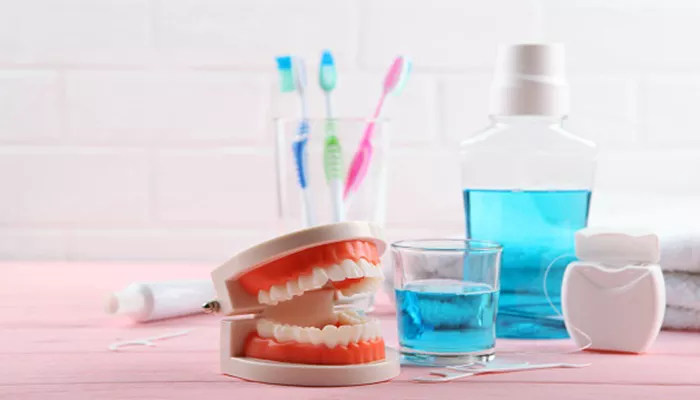Maintaining a dental retainer requires precision. Over-soaking can damage materials; under-soaking may leave bacteria. Many wearers face questions about timing. This guide offers a detailed introduction to safe soaking durations, practical steps, and tips for preventing complications such as bleeding gums, bad breath, and gum disease. A link to comprehensive info on third molarst is provided for further reading on oral health.
Optimal Soaking Time for Retainers
The ideal immersion period for most denture cleaners ranges from 3 to 10 minutes. Manufacturer instructions vary; always read product guidelines. Soaking beyond recommended intervals risks warping plastic and corroding metal components. Shorter durations may not eliminate biofilm, increasing risk of gum disease and persistent odors.
Manufacturer Guidelines
Follow instructions on packaging. Brands often specify 5–7 minutes. Exceeding this window can degrade retainer materials.
Material Considerations
Soft, flexible retainers withstand shorter soaks; hard acrylic types tolerate longer immersion. Metal wires should avoid extended exposure to chemical agents.
Frequency of Cleaning
Daily soaking is advised. Rinse and brush before and after each session. Weekly deep cleans may extend soak to manufacturer’s maximum.
Factors Influencing Soak Duration
Several variables affect how long a retainer should soak. Adjust timing based on personal habits and oral environment.
Oral Hygiene Habits
Inadequate brushing increases plaque buildup. If your routine is imperfect, consider a two-stage soak: an initial short rinse followed by a regular soak.
Dietary Factors
High-sugar diets fuel bacterial growth. Wearers who consume sweets may need more frequent soaks to prevent bad breath and deposits.
Age and Wear
Older retainers show micro-abrasions that trap debris. Increase soak time by one or two minutes to compensate for surface wear.
Step-by-Step Soaking Guide
A clear protocol ensures consistency and safety.
Step 1: Pre-Soak Rinse
Rinse under cool water to dislodge loose debris. Avoid hot water as it can warp plastic.
Step 2: Prepare Cleaning Solution
Dissolve denture cleaner tablet in a glass of lukewarm water. Stir until fully dissolved.
Step 3: Immerse Retainer
Fully submerge the retainer. Ensure wires and plastic surfaces are covered.
Step 4: Set a Timer
Use a kitchen timer. Adhere strictly to the recommended interval, typically 5–7 minutes.
Step 5: Post-Soak Rinse and Inspection
Remove retainer and rinse thoroughly to eliminate chemical residue. Inspect for remaining debris; brush gently if needed.
Risks of Over-Soaking
Extended exposure to cleaning agents can compromise retainer integrity and oral health.
Material Degradation
Plastic may become brittle; metal parts can corrode, leading to breakage or irritation.
Allergic Reactions
Residue left on retainers can irritate oral tissues, causing bleeding gums or lesions.
Altered Fit
Warping changes alignment, reducing orthodontic effectiveness and possibly aggravating gum disease.
Signs Your Retainer Needs Attention
Recognizing warning signals helps prevent complications.
Persistent Odor
A foul smell indicates bacterial buildup. Increase cleaning frequency and soak time.
Visible Deposits
White or yellow film requires brushing in addition to soaking. Do not extend immersion; instead, address deposits manually.
Oral Discomfort
Soreness or swelling signals irritation. Check for rough edges or chemical residue.
Bleeding Gums
If gums bleed upon retainer insertion, review your cleaning routine and consult a dentist.
Complementary Oral Care Practices
Soaking alone does not guarantee optimal oral health. Integrate these habits.
Daily Brushing and Flossing
Brush twice daily and floss to remove plaque that retainers cannot reach.
Regular Dental Visits
Professional cleanings detect early signs of gum disease and third molarst complications.
Hydration and Diet
Stay hydrated to maintain saliva flow. Limit acidic and sugary foods that fuel bacteria.
When to Consult a Professional
Persistent issues require expert intervention.
Chronic Bad Breath
Also known as halitosis. If home care fails, seek a dental evaluation.
Recurrent Bleeding Gums
Could indicate early periodontal disease. Professional scaling may be needed.
Retainer Damage
Cracks or distortions necessitate repair or replacement to maintain orthodontic results.
Unusual Pain or Swelling
May signal infection. Immediate dental consultation is advised.
Conclusion
Soaking your retainer in denture cleaner for the correct duration—typically 5–7 minutes—ensures cleanliness without damage. Adjust timing based on material, age of the device, and your oral hygiene habits. Combine soaking with brushing, rinsing, and regular dental visits to prevent bleeding gums, bad breath, and gum disease. Monitor for warning signs and consult a professional when needed. Consistent, careful care will extend the life of your retainer and support optimal oral health.

